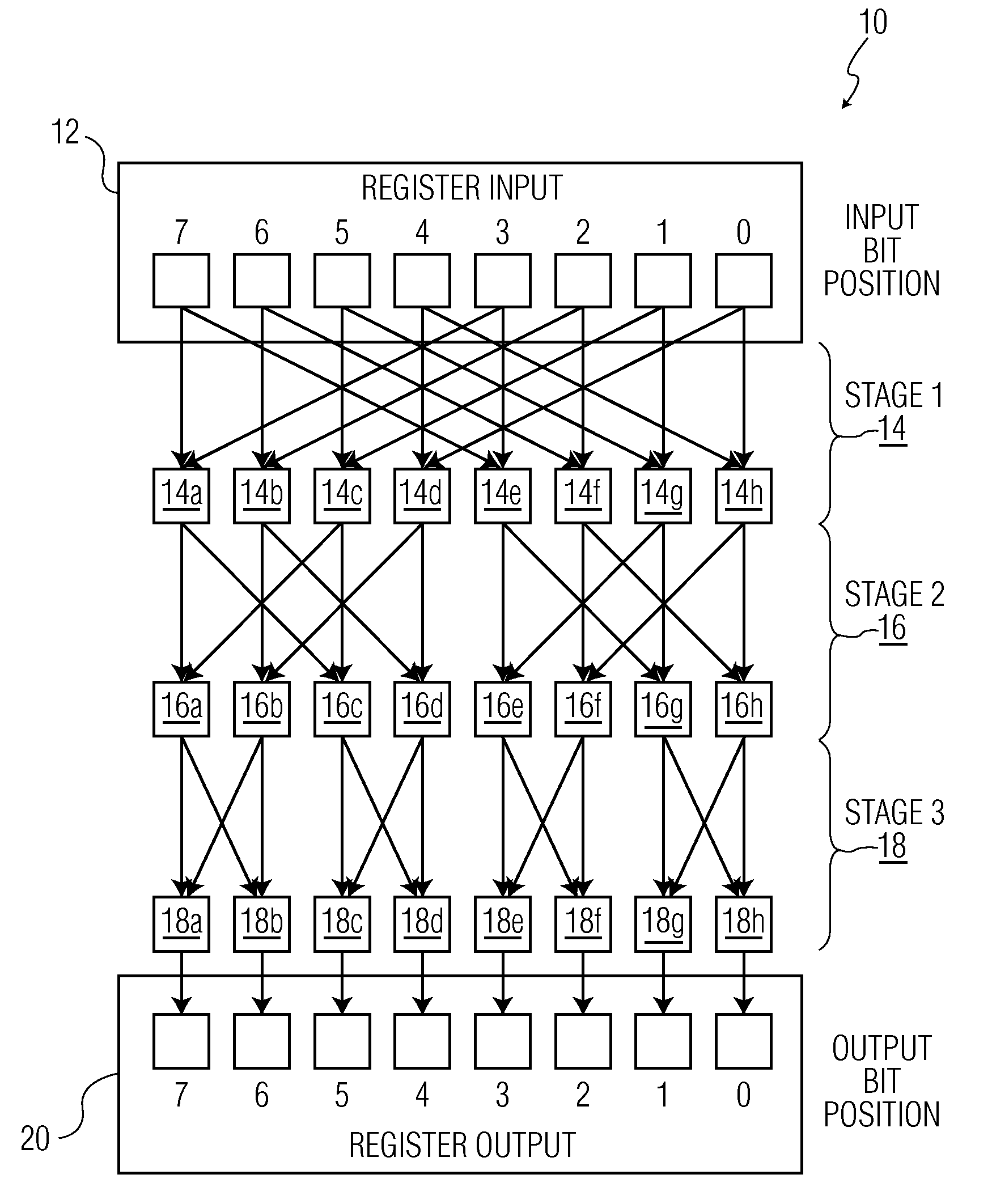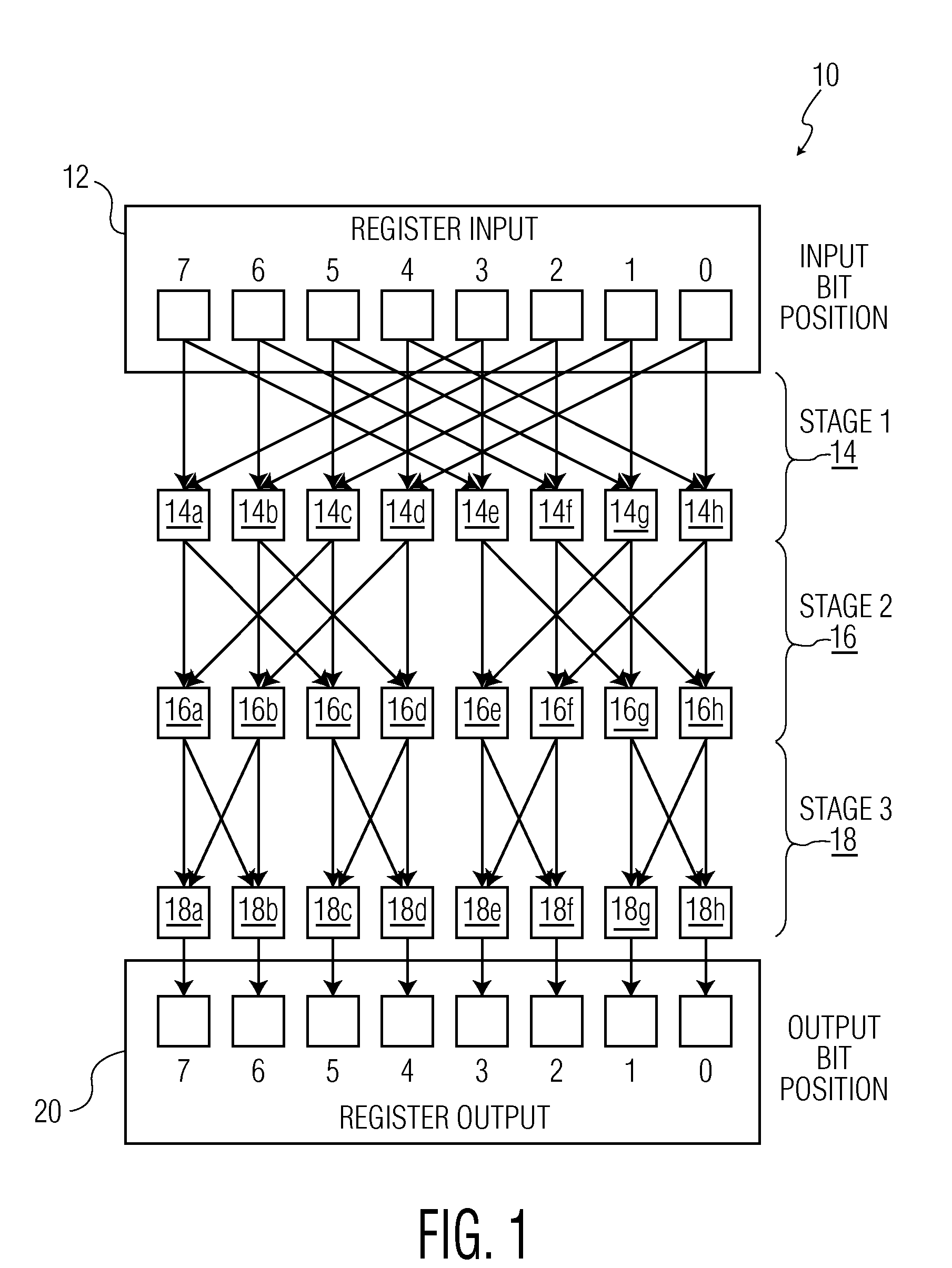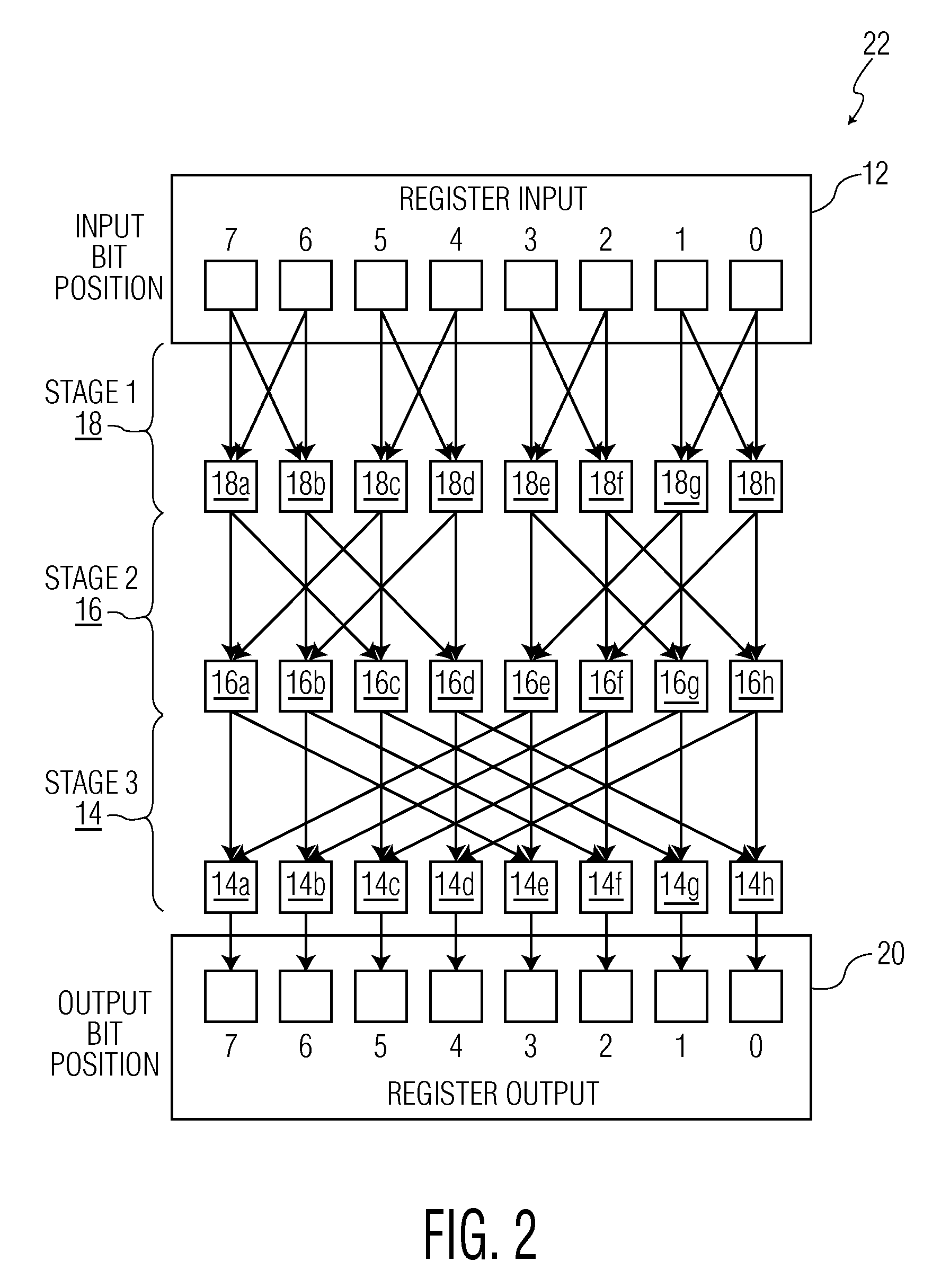Microprocessor Shifter Circuits Utilizing Butterfly and Inverse Butterfly Routing Circuits, and Control Circuits Therefor
a microprocessor and shifter technology, applied in the field of computer system circuits, can solve the problems of reducing the amount of circuitry and chip space, limiting the flexibility and ease of implementation of existing microprocessor bit manipulation operations at the hardware level, and often limited to shift and rotate operations
- Summary
- Abstract
- Description
- Claims
- Application Information
AI Technical Summary
Benefits of technology
Problems solved by technology
Method used
Image
Examples
first embodiment
[0043]FIG. 1 is a diagram showing the shifter circuit 10 of the present invention. The shifter circuit 10 includes a register input 12, a first shifter stage 14, a second shifter stage 16, and a third shifter stage 18, and a register output 20. The shifter circuit 10 can replace shifter circuits of existing processors. By the term “processor,” it is meant a microprocessor (or other circuitry of existing microprocessors which perform bit operations, such as those discussed above) or any other type of processor, such as digital signal processors, embedded processors, cryptoprocessors, communications processors, System-On-Chip(s) (SOC), etc. The register input 12 and output 20 are showing having a width of 8 bits (i.e., bit positions 0 through 7), but it is to be understood that any desired bit widths could be accommodated. The circuit stages 14-18 and their associated interconnections form a butterfly circuit, wherein the first stage 14 includes multiplexers 14a-14h, the second stage ...
second embodiment
[0044]FIG. 2 is a diagram showing the shifter circuit of the present invention, indicated generally at 22, wherein an inverse butterfly configuration is shown. As can be seen, the circuit stages 14-18 and their associated interconnections are reversed, such that the circuit stage 18 is provided as the first circuit stage and is connected to the register input 12, and the circuit stage 14 is provided as the third circuit stage and is interconnected to the register output 20. The circuit stage 16 remains the second circuit stage, interconnected between the first and third circuit stages 18 and 14. As mentioned above, the shifter circuit 22 can replace shifter circuits of existing microprocessors (or other circuitry of existing microprocessors which perform bit operations, such as those discussed above), and any desired bit width could be provided.
[0045]The shifter circuits 10 and 22 could be implemented in a microprocessor individually, or they could be connected to each other to form...
PUM
 Login to View More
Login to View More Abstract
Description
Claims
Application Information
 Login to View More
Login to View More - R&D
- Intellectual Property
- Life Sciences
- Materials
- Tech Scout
- Unparalleled Data Quality
- Higher Quality Content
- 60% Fewer Hallucinations
Browse by: Latest US Patents, China's latest patents, Technical Efficacy Thesaurus, Application Domain, Technology Topic, Popular Technical Reports.
© 2025 PatSnap. All rights reserved.Legal|Privacy policy|Modern Slavery Act Transparency Statement|Sitemap|About US| Contact US: help@patsnap.com



